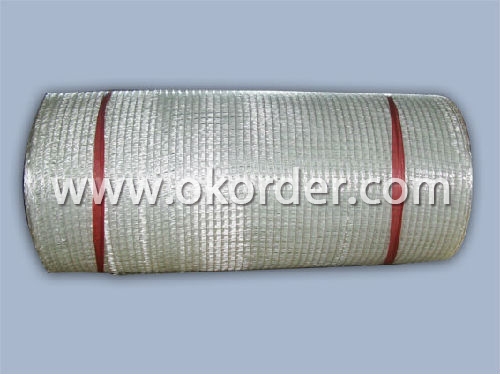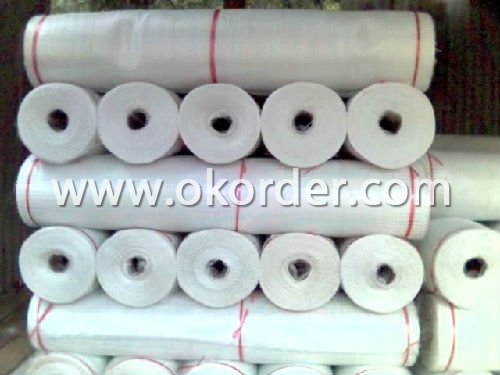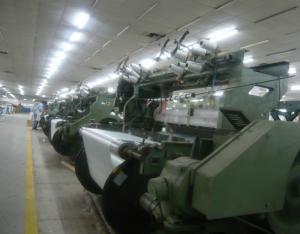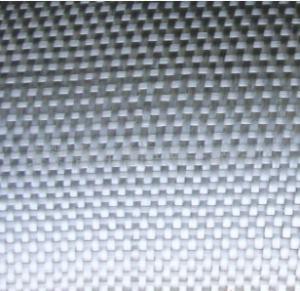Classic Fiberglass Fabrics
- Loading Port:
- Qingdao Port
- Payment Terms:
- TT or LC
- Min Order Qty:
- 10000 M2 m²
- Supply Capability:
- 50000000 M2 Per Year m²/month
OKorder Service Pledge
OKorder Financial Service
You Might Also Like
Introducton of Fiberglass Fabrics for surfboard:
Fiberglass fabric is corrosion resistance, high intensity, electricity insulation, compatibility with other resin. Fiberglass fabric is widely used into electric insulation field for PCB or copper clad laminate.
Technical Data Sheet of Fiberglass Fabrics for surfboard:
Fabric Count Warp×Fill(Per cm) | Yarn(SI)
| Thickness(mm) (Rreference Only) | Nominal Weight(g/m2) | Weight Tolerance(g/m2) |
23.6×18.5 | 5 11 1×0 5 11 1×0 | 0.053 | 46.8 | 45.1-48.5 |
23.6×23.6 | 5 11 1×0 5 11 1×0 | 0.056 | 52.9 | 51.5-54.2 |
19.3×16.5 | 7 45* 1×0 7 45* 1×0 | 0.149 | 164.1 | 157.7-170.5 |
18.1×17.7 | 7 45* 1×0 7 45* 1×0 | 0.140 | 1654.0 | 158.0-171.0 |
23.6×19.7 | 6 33 1×0 6 33 1×0 | 0.125 | 148.0 | 142.8-153.2 |
20.0×10.8 | 9 331×0 9 74 1×0 | 0.135 | 146.2 | 142.1-150.3 |
20.5×20.5 | 9 34* 1×0 9 34* 1×0 | 0.114 | 138.3 | 133.6-143. |
23.6×22.0 | 7 22 1×0 5 11 1×0 | 0.079 | 78.0 | 75.6-80.4 |
22.0×18.9 | 7 22 1×0 7 22 1×0 | 0.084 | 90.9 | 88.5-93.2 |
23.6×22.8 | 7 22 1×0 7 22 1×0 | 0.094 | 103.8 | 100.7-106.8 |
26.0×21.7 | 7 22 1×0 7 22 1×0 | 0.095 | 108 | 104.8-111.2 |
17.3×12.2 | 9 681×0 9 68 1×0 | 0.173 | 203.4 | 198.0-208.9 |
17.9×13.4 | 9 68 1×0 9 68 1×0 | 0.18 | 210.0 | 204.5-215.3 |
17.3×11.4 | 9 68 1×0 9 102* 1×0 | 0.201 | 232.3 | 226.5-238.0 |
17.5×7.9 | 9 68 1×0 9 136* 1×0 | 0.254 | 227.8 | 221.1-234.7 |
17.4×10 | 9 68 1×0 9 136* 1×0 | 0.250 | 260.0 | 255.2-265.3 |


- Q:Can fiberglass fabric be used for filters?
- Yes, fiberglass fabric can be used for filters. It is commonly used in applications such as air filters, oil filters, and water filtration systems due to its high efficiency in trapping particles and its resistance to chemicals and heat.
- Q:Can fiberglass fabric be used for reinforcement in septic tanks?
- Yes, fiberglass fabric can be used for reinforcement in septic tanks. Fiberglass fabric is known for its strength and durability, making it an excellent choice for reinforcing structures, including septic tanks. The fabric can be used to reinforce the walls and base of the tank, providing additional strength and preventing cracks or leaks. Additionally, fiberglass fabric is resistant to corrosion, which is important in a septic tank environment where there can be high levels of sewage and chemicals. Overall, using fiberglass fabric for reinforcement in septic tanks can enhance their longevity and structural integrity.
- Q:How does fiberglass fabric handle saltwater exposure?
- The resistance of fiberglass fabric to saltwater exposure is widely recognized. This is because the fabric is made up of glass fibers, which makes it highly resistant to the corrosive effects of saltwater. Unlike materials like steel or aluminum, fiberglass does not rust or corrode when it comes into contact with saltwater. Saltwater contains high levels of sodium chloride, which can be extremely harmful to many materials. However, fiberglass fabric remains unaffected by this corrosive element. This is because the glass fibers used in fiberglass are chemically inert and do not react with the salt in saltwater. As a result, the fabric maintains its structural integrity, strength, and durability even after prolonged exposure to saltwater. Furthermore, fiberglass fabric also has resistance to other elements commonly found in saltwater, such as seaweed, algae, and marine organisms. These elements often attach themselves to surfaces, causing damage or reducing performance. However, the smooth and non-porous surface of fiberglass fabric makes it challenging for these organisms to adhere. This reduces the need for maintenance and extends the lifespan of the fabric. In conclusion, fiberglass fabric is an excellent option for saltwater exposure due to its ability to resist corrosion and damage from saltwater, as well as its capacity to repel marine organisms. Whether it is used in marine applications like boat hulls, docks, or coastal structures, fiberglass fabric provides a durable and dependable solution for saltwater environments.
- Q:Latex paint cracking, how to deal with latex paint cracking what are the reasons?
- If only the surface cracking, just shovel off putty, paste glass fiber cloth or high elastic fiber paper tape, and then scrape putty, paint paint can be.
- Q:Are fiberglass fabrics suitable for use in the agricultural industry?
- Yes, fiberglass fabrics are suitable for use in the agricultural industry. Fiberglass fabrics offer several properties that make them ideal for agricultural applications. Firstly, fiberglass is known for its high strength and durability, making it capable of withstanding the harsh conditions often found in agricultural settings. This means that fiberglass fabrics can be used for various purposes such as covering greenhouses, protecting crops from pests and extreme weather conditions, and reinforcing agricultural equipment. Additionally, fiberglass fabrics are resistant to chemicals and UV radiation, which is essential in the agricultural industry as it often involves the use of fertilizers, pesticides, and exposure to sunlight. The resistance to chemicals ensures that the fiberglass fabrics will not degrade or be negatively affected by these substances. Furthermore, the UV resistance prevents the fabric from deteriorating or becoming brittle when exposed to sunlight for extended periods. Another advantage of fiberglass fabrics in the agricultural industry is their fire resistance. This property is crucial as it helps to prevent the spread of fire in case of accidents or incidents involving flammable materials commonly found in agricultural settings. Moreover, fiberglass fabrics are lightweight and easy to handle, making them convenient for various applications in the agricultural industry. They can be easily cut and tailored to fit specific requirements, allowing for customization based on the needs of farmers and agricultural workers. Overall, the strength, durability, chemical resistance, UV resistance, fire resistance, and ease of handling make fiberglass fabrics highly suitable for use in the agricultural industry. They provide a reliable and versatile solution for various applications, contributing to the efficiency and productivity of agricultural operations.
- Q:Is fiberglass fabric suitable for outdoor use?
- Indeed, fiberglass fabric proves to be a viable option for outdoor utilization. Renowned for its exceptional sturdiness and ability to withstand diverse environmental influences, such as sunlight, moisture, and temperature fluctuations, fiberglass fabric is highly regarded. Moreover, it exhibits remarkable resistance to chemicals, rendering it appropriate for outdoor applications where exposure to severe weather conditions or chemicals is anticipated. In addition, fiberglass fabric boasts attributes such as lightweightness, flexibility, and ease of handling, making it an optimal selection for outdoor commodities, including awnings, canopies, boat covers, and upholstery for outdoor furniture. Its capacity to endure high temperatures and its property of being fire-retardant also contribute to its suitability for outdoor use. All in all, fiberglass fabric is a dependable and extensively utilized material for outdoor applications due to its robustness, durability, and resistance to various outdoor elements.
- Q:Can fiberglass fabric be used for wall coverings?
- Fiberglass fabric has the capability to serve as wall coverings. This versatile material presents numerous advantages for wall coverings. It possesses a lightweight nature, durability, and exceptional resistance to moisture, mold, and mildew. These properties render it a perfect selection for areas prone to high humidity, such as bathrooms or kitchens. Furthermore, fiberglass fabric can be effortlessly installed on walls, either through adhesive application or stapling it onto the surface. It also allows for painting, enabling a customized finish that aligns with the desired interior design. Additionally, fiberglass fabric exhibits fire resistance, making it a safer choice for wall coverings. With a high melting point and the absence of toxic fumes emission when exposed to fire, it becomes a crucial consideration for building safety. In conclusion, fiberglass fabric emerges as a pragmatic and versatile option for wall coverings, offering both aesthetic allure and functional advantages.
- Q:What are the main characteristics and differences between CEM-3 high thermal conductivity and aluminum substrate? Which kind of board is more advantageous to make lamps and lanterns?
- The thermal conductivity of CEM-3 material can reach 1.0~2.0, with high thermal conductivity and strong price advantage, and few domestic manufacturers can produce. This is a new and high technology.
- Q:Can fiberglass fabric be used for making conveyor belts or hoses?
- Conveyor belts or hoses can indeed utilize fiberglass fabric. Renowned for its exceptional strength and durability, fiberglass fabric proves itself as an optimal material for diverse industrial uses. Its capacity to endure high temperatures, resist chemicals and abrasions, and exhibit minimal moisture absorption renders it highly desirable for conveyor belts and hoses. Furthermore, fiberglass fabric's lightweight and flexible nature facilitates effortless installation and maneuvering. Ultimately, the incorporation of fiberglass fabric in the production of conveyor belts or hoses substantially amplifies their efficiency and longevity.
- Q:How is fiberglass fabric used in the aerospace industry?
- The aerospace industry extensively utilizes fiberglass fabric due to its exceptional strength-to-weight ratio, thermal resistance, and electrical insulation properties. The primary application of fiberglass fabric in this industry involves producing composite materials. These materials are created by combining fiberglass fabric with resins, resulting in a lightweight and robust material that can be molded into various shapes. These composites are then used to manufacture essential parts such as fuselages, wings, and fairings, which play a crucial role in maintaining the structural integrity of aircraft and spacecraft. The incorporation of fiberglass fabric in composites allows for the production of intricate shapes while ensuring strength and durability. Furthermore, fiberglass fabric is also utilized in insulating aerospace vehicles. It acts as a thermal barrier, safeguarding the aircraft or spacecraft from extreme temperatures experienced during flight. This feature is particularly critical in space exploration, as spacecraft encounter intense heat during re-entry into the Earth's atmosphere. In addition, fiberglass fabric is employed in the electrical systems of aerospace vehicles. It possesses excellent electrical insulation properties, effectively preventing the flow of electric current and protecting against short circuits. This is of utmost importance in the aerospace industry, where electrical systems are vital for navigation, communication, and other essential functions. Overall, the use of fiberglass fabric in the aerospace industry provides numerous benefits, including its lightweight nature, high strength, thermal resistance, and electrical insulation properties. Its incorporation in composites, insulation, and electrical systems significantly contributes to the performance, safety, and efficiency of aircraft and spacecraft.
1. Manufacturer Overview |
|
|---|---|
| Location | Shandong, China |
| Year Established | 1964 |
| Annual Output Value | Above US$ 20 Million |
| Main Markets | 20.00% North America 20.00% South America 10.00% Eastern Europe 10.00% Southeast Asia 10.00% Northern Europe 10.00% South Asia 10.00% Western Europe 5.00% Africa 5.00% Mid East |
| Company Certifications | ISO9001:2000 |
2. Manufacturer Certificates |
|
|---|---|
| a) Certification Name | |
| Range | |
| Reference | |
| Validity Period | |
3. Manufacturer Capability |
|
|---|---|
| a)Trade Capacity | |
| Nearest Port | Qingdao Port |
| Export Percentage | 31% - 40% |
| No.of Employees in Trade Department | 10-20 People |
| Language Spoken: | English; Chinese; |
| b)Factory Information | |
| Factory Size: | Above 200,000 square meters |
| No. of Production Lines | Above 10 |
| Contract Manufacturing | Design Service Offered; Buyer Label Offered |
| Product Price Range | High; Average |
Send your message to us
Classic Fiberglass Fabrics
- Loading Port:
- Qingdao Port
- Payment Terms:
- TT or LC
- Min Order Qty:
- 10000 M2 m²
- Supply Capability:
- 50000000 M2 Per Year m²/month
OKorder Service Pledge
OKorder Financial Service
Similar products
New products
Hot products
Related keywords



























